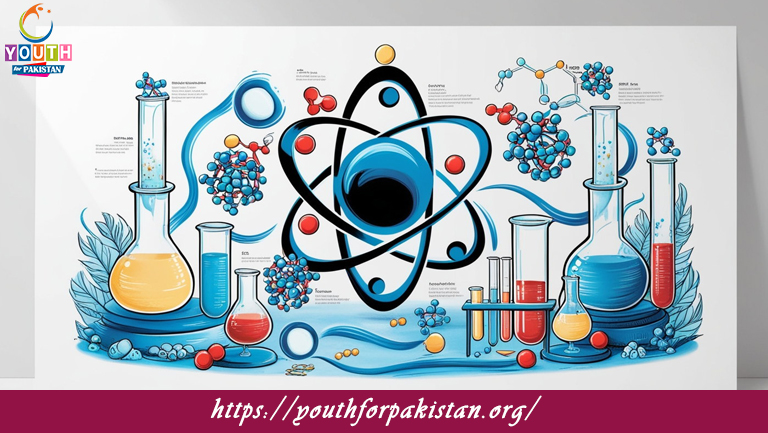Welcome to the Fundamental Concepts Of Chemistry MDCAT MCQs with Answers. In this post, we have shared Fundamental Concepts Of Chemistry Multiple Choice Questions and Answers for PMC MDCAT 2024. Each question in MDCAT Chemistry offers a chance to enhance your knowledge regarding Fundamental Concepts Of Chemistry MCQs in this MDCAT Online Test.
Which of the following is a chemical change?
a) Melting of ice
b) Boiling of water
c) Rusting of iron
d) Breaking of glass
Which element has the highest electronegativity?
a) Oxygen
b) Fluorine
c) Nitrogen
d) Chlorine
The atomic number of an element represents the number of:
a) Neutrons
b) Electrons
c) Protons
d) Nucleons
Which of the following is an example of a covalent bond?
a) NaCl
b) H2O
c) CaCl2
d) KCl
Which gas is most abundant in the Earth’s atmosphere?
a) Oxygen
b) Carbon Dioxide
c) Nitrogen
d) Hydrogen
The pH of a neutral solution at 25°C is:
a) 1
b) 7
c) 10
d) 14
Which of the following is an example of an exothermic reaction?
a) Photosynthesis
b) Melting of ice
c) Combustion of gasoline
d) Dissolution of ammonium nitrate in water
Which of the following is a noble gas?
a) Oxygen
b) Hydrogen
c) Nitrogen
d) Helium
Which of the following represents Avogadro’s number?
a) 3.14 × 10²³
b) 6.02 × 10²³
c) 1.67 × 10⁻²⁴
d) 9.81 × 10⁵
Which of the following is the most common isotope of hydrogen?
a) Deuterium
b) Tritium
c) Protium
d) Heavy water
The rate of a chemical reaction depends on:
a) Temperature
b) Pressure
c) Concentration of reactants
d) All of the above
Which of the following compounds is polar?
a) CO2
b) CH4
c) H2O
d) O2
Which of the following is a strong acid?
a) HCl
b) NH3
c) NaOH
d) CH3COOH
Which of the following is an example of a Lewis base?
a) BF3
b) NH3
c) HCl
d) CO2
The unit of molarity is:
a) moles/L
b) grams/L
c) moles/kg
d) liters/mol
Which of the following best describes an isotope?
a) Atoms with different numbers of protons
b) Atoms with the same number of protons but different numbers of neutrons
c) Atoms with different atomic numbers
d) Atoms with the same mass number
Which of the following is a common reducing agent?
a) O2
b) H2
c) CO2
d) H2O
Which of the following is an allotrope of carbon?
a) Diamond
b) Sodium
c) Iron
d) Oxygen
Which of the following pairs of elements form an ionic bond?
a) H and O
b) Na and Cl
c) C and H
d) O and N
What is the common oxidation state of oxygen in most compounds?
a) +1
b) -1
c) -2
d) +2
Which of the following represents the ideal gas law?
a) PV = nRT
b) E = mc²
c) V = IR
d) F = ma
The main component of natural gas is:
a) Ethane
b) Propane
c) Methane
d) Butane
Which of the following metals is most reactive with water?
a) Sodium
b) Calcium
c) Iron
d) Copper
Which of the following is a non-metal?
a) Magnesium
b) Aluminum
c) Sulfur
d) Zinc
Which element is known as the “King of Chemicals”?
a) Sulfur
b) Oxygen
c) Chlorine
d) Nitrogen
Which of the following is a halogen?
a) Argon
b) Neon
c) Bromine
d) Xenon
The heat required to raise the temperature of 1 gram of water by 1°C is called:
a) Specific heat
b) Latent heat
c) Calorific value
d) Heat of fusion
Which of the following is a liquid at room temperature?
a) Oxygen
b) Nitrogen
c) Mercury
d) Helium
Which of the following is not a mixture?
a) Air
b) Salt water
c) Sugar
d) Soil
Which of the following is an alkali metal?
a) Calcium
b) Potassium
c) Aluminum
d) Zinc
Which of the following substances has the highest melting point?
a) Ice
b) Iron
c) Sodium chloride
d) Oxygen
The law of conservation of mass was established by:
a) Lavoisier
b) Dalton
c) Rutherford
d) Bohr
The process of separating a solid from a liquid by evaporating the liquid is called:
a) Filtration
b) Distillation
c) Crystallization
d) Sedimentation
Which of the following is an example of a physical change?
a) Burning of wood
b) Rusting of iron
c) Melting of ice
d) Cooking of food
Which of the following is the most abundant element in the Earth’s crust?
a) Silicon
b) Aluminum
c) Oxygen
d) Iron
The atomic mass of an element is primarily determined by the number of:
a) Protons and electrons
b) Neutrons and electrons
c) Protons and neutrons
d) Neutrons and photons
Which of the following is an acid according to the Bronsted-Lowry theory?
a) NH3
b) HCl
c) NaOH
d) CH4
Which of the following best describes the octet rule?
a) Atoms gain or lose electrons to attain 8 electrons in their outer shell
b) Atoms gain or lose protons to attain 8 protons in their nucleus
c) Atoms share protons to achieve stability
d) Atoms combine to form molecules with 8 atoms
Which of the following gases is responsible for the greenhouse effect?
a) Oxygen
b) Carbon dioxide
c) Nitrogen
d) Argon
Which of the following compounds is insoluble in water?
a) NaCl
b) AgCl
c) KNO3
d) H2SO4
If you are interested to enhance your knowledge regarding Physics, Chemistry, Computer, and Biology please click on the link of each category, you will be redirected to dedicated website for each category.








